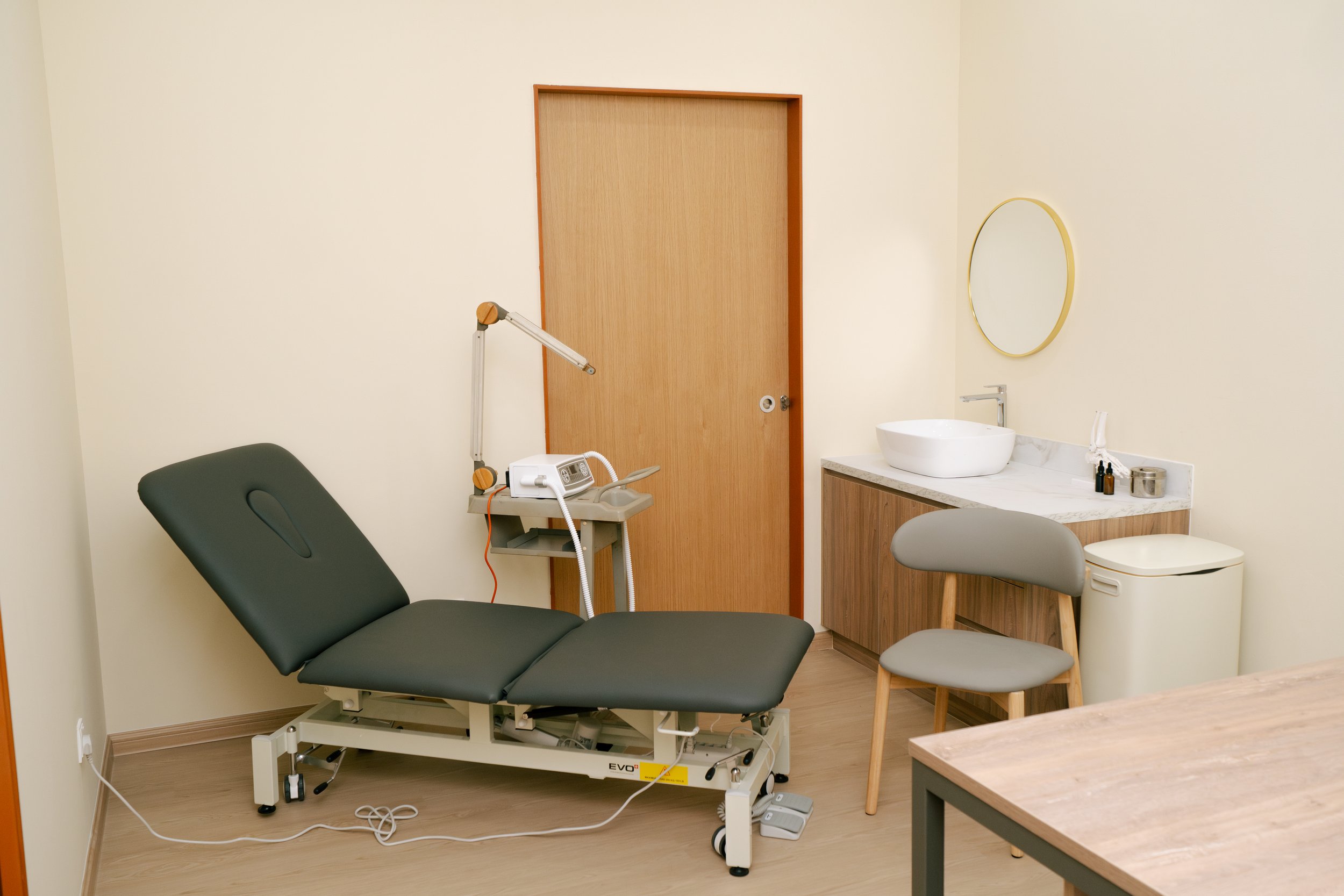
Rheumatoid Arthritis
What Is Rheumatoid Arthritis?
Rheumatoid arthritis (RA) is a chronic autoimmune condition where the body’s immune system mistakenly attacks the lining of your joints, leading to ongoing inflammation, pain, swelling, and joint destruction.
Unlike osteoarthritis, which results from general wear and tear, RA often affects the same joints on both sides of the body, including the small joints of the hands, feet, ankles, knees, and hips. In some cases, it can also affect other organs such as the heart, lungs, and eyes.
Over time, rheumatoid arthritis can lead to joint deformities and structural changes that interfere with your ability to walk, wear shoes comfortably, or remain active.
Causes & Risk Factors
The exact cause of RA is unknown, but several factors are thought to contribute:
Autoimmune response: Your immune system attacks healthy joint tissue, mistaking it for a threat.
Genetic predisposition: Certain genes may increase the risk, especially when combined with environmental triggers like infections.
Environmental factors: Exposure to smoking, pollution, or certain workplace hazards (e.g. silica) may raise your risk.
Hormonal influences: Changes during pregnancy or menopause can influence RA severity.
Risk factors include:
Age 40–60
Female gender
Family history of RA or autoimmune disease
Smoking
Obesity
Existing autoimmune conditions (e.g. lupus, psoriasis)
Common Symptoms of Rheumatoid Arthritis
RA typically develops gradually but can become severely limiting without proper care. Symptoms may include:
Persistent joint pain, swelling and tenderness
Stiffness, especially in the morning lasting >30 minutes
Symmetrical symptoms, affecting both sides of the body
Rheumatoid nodules—firm lumps under the skin near joints
Reduced range of motion
Fatigue, fever, and appetite loss during flare-ups
Visible joint deformities in later stages
Foot-specific issues: forefoot collapse, hammertoes, bunions, and painful pressure points that make walking and wearing shoes difficult
Diagnosing RA and Joint Damage
Diagnosing RA early is key to preventing irreversible damage. While RA is usually diagnosed by a rheumatologist, our podiatrists work closely with your care team to assess your foot and ankle joints for damage, pain, deformities and function.
We may also refer you for:
X-rays or MRI to assess joint changes
Blood tests (ordered via your GP or rheumatologist) to confirm inflammation markers and autoimmune activity (e.g. rheumatoid factor, CRP, ESR)
Podiatry Treatment for Rheumatoid Arthritis
At KL Foot Specialist Podiatry, we work alongside your GP and rheumatologist to provide expert foot care, mobility support and joint protection strategies.
Custom Foot Orthotics
We create custom-designed insoles to offload painful joints, support deformed or unstable areas, and restore more natural walking patterns. This improves your comfort while reducing strain on inflamed joints.
Footwear Advice & Modifications
We assess your current footwear and recommend shoes with wide toe boxes, cushioned soles, and added stability. Where needed, we modify your existing shoes to accommodate deformities or pressure points.
DolorClast® High Power Laser
Our DolorClast® High Power Laser is a painless, drug-free treatment that reduces inflammation, relieves pain, and improves mobility in arthritic joints. It’s especially useful during flare-ups or when oral medications are contraindicated.
Ankle-Foot Orthotics (AFOs)
For severe joint instability or deformity, AFOs provide external support and prevent further joint deterioration. These custom devices help improve balance, walking function and reduce fatigue.
Rehabilitation & Strengthening
We prescribe gentle exercises to maintain joint range of motion and muscle strength. Staying active is key to managing RA, and we’ll guide you in a safe, low-impact way.
Additional Support
If inflammation persists or pain significantly affects your mobility, we can refer you for:
Anti-inflammatory medications (via GP)
Corticosteroid injections
Imaging and surgical consultations when necessary
What Happens If RA Is Left Untreated?
Without treatment or joint protection strategies, RA can cause:
Permanent joint damage and deformities
Loss of mobility
Chronic pain
Difficulty walking or standing for long periods
Increased risk of cardiovascular and lung complications
Shortened lifespan due to persistent inflammation
Preventing Complications & Supporting Joint Health
While you can’t fully prevent RA, you can manage its impact. To support joint health:
Stop smoking and avoid second-hand smoke
Maintain a healthy weight
Wear supportive footwear daily
Perform regular low-impact exercises (e.g. swimming, walking)
Manage flares early with your care team
Eat an anti-inflammatory diet (rich in omega-3s, whole foods)
Stay consistent with medications and rheumatology care
Avoid prolonged joint strain or standing
When to See a Podiatrist for Rheumatoid Arthritis
Early podiatric care is essential if you:
Have foot pain or swelling that limits walking
Notice deformities or bony lumps near your toes
Struggle to find shoes that fit due to joint changes
Experience regular RA flares in your feet or ankles
Have difficulty with balance or feel unstable when walking
Our team at KL Foot Specialist Podiatry has extensive experience working with people living with rheumatoid arthritis. We’re here to help you move better, feel better, and live better—starting from the ground up.
Struggling with Rheumatoid Arthritis?
Chronic joint pain and stiffness from rheumatoid arthritis can make even simple tasks feel overwhelming. At KL Foot Specialist Podiatry, we understand the daily challenges and provide personalised treatment to reduce inflammation, support your joints, and help you stay active.
Call us or book your consultation online to take the first step toward better mobility and comfort.
